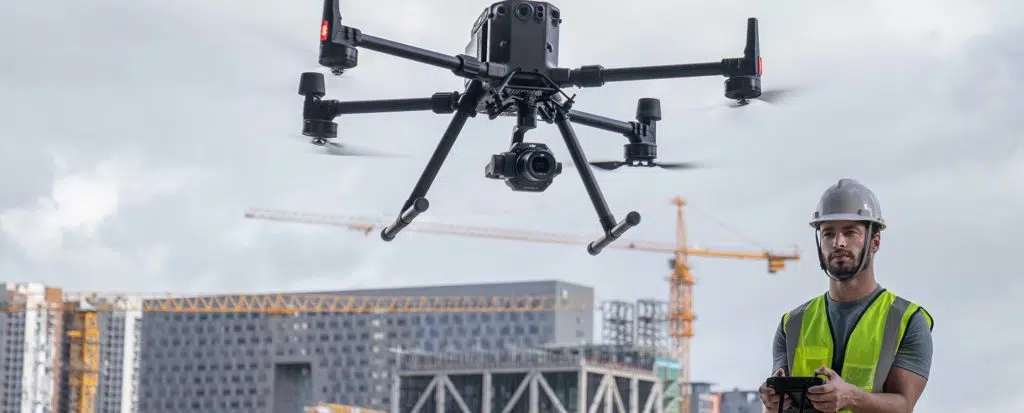Can You Fly a Drone in the Rain?
Surveying your earthworks or civil construction site with a drone provides you with accurate data you can use to track your project’s progress. While it’s preferable that drone pilots fly in good weather on a clear day, there may be an occasion when you get caught in inclement weather conditions on your worksite with your drone still in the air. Here we’ll provide you with some guidelines for flying in rainy weather and how to care for your drone if it gets wet.
Generally, it’s not recommended to fly drones in rain, mist, high humidity, or over water bodies with strong winds. Many drones have venting holes that can expose the electronics inside to moisture. Once water gets inside, short circuits can occur and possibly damage your drone. If precipitation gets inside a drone mid-flight it can impair the electrical components, making it inoperable and possibly causing it to crash.
Some manufacturers do build drones that are capable of handling varying levels of moisture based on their application. However, unlike most consumer drones, waterproof drones have special frames that are completely sealed to protect the electronic parts. They’re able to resist heavy rain, but usually not for a very long time. DJI’s Matrice 300 RTK is an example of a Propeller-supported drone that is water resistant.

Your drone’s capacity to withstand rain and moisture depends upon the following:
- the drone’s IP rating
- whether you applied after-market waterproofing (this may void your drone’s warranty)
- how quickly you’re able to dry your drone after a flight where you encountered rain
You can find the IP rating in your drone’s manual or simply search online for your specific model. The rating is written as “IP” with two numbers directly following. The first digit denotes protection from dust and other solid elements, and the second digit denotes protection against liquids. The higher the number, the more protection. If there’s no digit referring to either form of protection, an “X” is shown instead of a number.
What to do if it starts raining while you’re flying
Perhaps you are flying your drone and surveying your worksite when you notice the onset of dark clouds and a light rain begins to fall. What should you do? Don’t wait for the rain to develop into a heavy downpour. If the rain takes you by surprise, land your drone immediately and take it to a dry place. If your drone is water resistant, it might survive a quick landing while it’s raining. But even water resistant drones have difficulty handling a violent storm.
In summary, here’s how you can minimize rainwater damage to your drone:
- Avoid flying in the rain for very long
- Quickly get your aircraft back to the ground
- Power it off to prevent battery damage and shorts circuits
- Remove the battery(s)
- Take your drone indoors
- Dry the drone body thoroughly
- Don’t turn the drone’s power on until you are sure it’s completely dry




